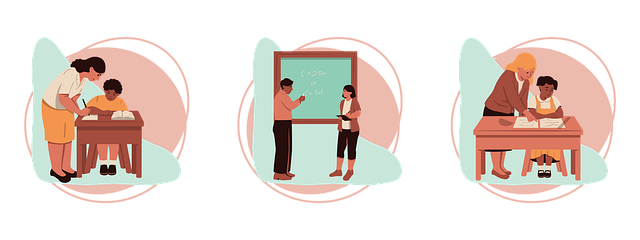Marion County, Oregon's child support guidelines prioritize fairness and flexibility in calculating financial obligations for children's best interests. Key factors include parents' income levels, time spent with the child, and specific needs. Equal parenting time usually results in a 50/50 split, while adjustments are made based on disparities. The goal is to maintain a standard of living similar to what the child would have had if their parents were together. Income is paramount, with guidelines varying for different family dynamics, ensuring every child receives adequate financial support from both parents. Non-compliance may lead to enforcement actions by DHS, and modifications are available for significant life changes.
“Navigating Oregon’s child support guidelines is crucial for fair and effective financial planning in families. This comprehensive guide delves into the intricate details of child support in Marion County, offering an in-depth overview of key determinants. From understanding income and earnings to exploring shared and sole custody arrangements, each aspect plays a significant role in support amounts. Furthermore, the article illuminates expenses covered and provides insights on enforcing and modifying Oregon child support orders, ensuring all parents are equipped to manage their financial obligations.”
- Understanding Oregon's Child Support Guidelines: An Overview
- Key Factors in Determining Child Support in Marion County
- Income and Earnings: How They Influence Support Amounts
- Shared and Sole Custody: Implications on Financial Obligations
- Expenses Covered: Medical, Education, and Other Needs
- Enforcing and Modifying Oregon Child Support Orders
Understanding Oregon's Child Support Guidelines: An Overview

In Oregon, child support guidelines are designed to ensure fair and consistent calculations for all child support cases. These guidelines consider various factors, including both parents’ income levels, the time each parent spends with the child, and the needs of the child. For Marion County child support cases, these guidelines serve as a framework to determine the amount each parent should contribute towards their shared financial responsibilities.
The Oregon Child Support Guidelines are based on the concept of equal parenting time, meaning that when parents share custody equally, each pays 20% of the basic child support obligation. However, adjustments are made based on income disparities and actual parenting time. Understanding these nuances is crucial for anyone involved in a Marion County child support case, as it can significantly impact the final support order.
Key Factors in Determining Child Support in Marion County

In Marion County child support cases, several key factors are considered when determining an appropriate support amount. The primary factor is the best interest of the child, ensuring they maintain a standard of living close to what they would experience if the parents remained together. Income levels play a significant role; both parents’ earnings impact the overall calculation, with guidelines varying based on the number of children and each parent’s financial contribution. The court also evaluates the time each parent spends with the child, as shared custody arrangements may result in reduced support obligations for the primary caregiver.
Other important considerations include the children’s needs, such as healthcare, education, and extracurricular activities, as well as any existing support orders or debts that could affect disposable income. In Marion County, the support guidelines are designed to be fair and flexible, taking into account unique family dynamics and ensuring every child receives the necessary financial support from both parents.
Income and Earnings: How They Influence Support Amounts

In Oregon, including Marion County child support cases, the amount of financial support paid or received is determined by several factors, with income being a key consideration. The state’s guidelines take into account both parents’ earnings to calculate child support obligations. This includes assessing the custodial parent’s (the parent with primary physical custody) gross income, which is the total earnings before any deductions. At the same time, the non-custodial parent’s (the parent who has less time with the child) income is also taken into account, especially when calculating the difference between the two parents’ financial contributions.
The state has established a formula that considers each parent’s income, the number of children involved in the case, and other relevant factors to determine a fair and reasonable support amount. For Marion County child support cases, understanding how income influences support amounts is crucial for both parties. This ensures that calculations are accurate and that financial obligations align with each parent’s ability to contribute, fostering a more equitable process.
Shared and Sole Custody: Implications on Financial Obligations

In Oregon, child support guidelines are designed to ensure fair and equitable financial obligations for both parents, regardless of whether they share custody or have sole custody. When parents share physical and legal custody, the obligations are typically split equally. This means each parent is responsible for covering a proportionate share of the child’s needs, including expenses like housing, food, clothing, and healthcare. In such cases, Marion County child support cases often involve dividing income, assets, and expenses to maintain a balanced standard of living for the child.
In contrast, when one parent has sole custody, they bear the primary financial responsibility for the child’s upbringing. The non-custodial parent still contributes to these expenses through child support payments, which are calculated based on their income and the court-ordered percentage. These guidelines aim to provide stability and security for the child, ensuring they receive the necessary resources regardless of their parents’ living arrangements.
Expenses Covered: Medical, Education, and Other Needs

In Oregon’s child support guidelines, the court considers various expenses when determining financial obligations in Marion County child support cases. One significant aspect is the coverage of essential needs for the child or children involved. This includes medical expenses, which can encompass a wide range of healthcare-related costs, such as doctor visits, prescription medications, and hospital stays. The guidelines also emphasize the importance of educational needs, ensuring that children receive the resources necessary to thrive academically. This may involve paying for school supplies, tuition fees, or even additional tutoring services.
Furthermore, the court recognizes other critical expenses that contribute to a child’s overall well-being. These can range from basic necessities like food and clothing to extracurricular activities that foster personal development. By addressing these diverse needs, Oregon’s child support guidelines aim to provide a comprehensive framework for supporting children and their families in Marion County and beyond.
Enforcing and Modifying Oregon Child Support Orders

In Oregon, child support orders are enforced and modified through a structured legal process designed to ensure the financial well-being of children. When parents or guardians fail to comply with a child support order, Marion County child support cases may involve enforcement actions taken by the Oregon Department of Human Services (DHS). These can include wage garnishments, tax refunds levies, and other means to secure back payments.
Modifying an existing child support order is another common procedure. Parents who experience significant life changes, such as a substantial increase or decrease in income, may request a modification to adjust the support amount accordingly. This process typically requires submitting a motion to the court, providing updated financial information, and demonstrating why the change is necessary. For Marion County child support cases, understanding these procedures and working with legal professionals experienced in family law can make navigating these complexities more manageable.
